As Vivid Now as it Shall Ever Be: On Contradictions and the Transformation from Restless to Divine
The morning fog is still rising when I wake up, which is to say it’s early and colder than you might expect for a September dawn in Ohio. We—my wife, young daughter, and I—are on our way to Bali, a small island known to many Westerners through a certain book about divorce, DIY spirituality, and falling in love.
At the airport, the hours pass quickly, and soon we’re slingshotted onward. Philly to Doha to Denpasar, Indonesia. Three flights, 31 hours of temporary homelessness. When we land it is 10:30 p.m. local time and I can feel the heat gradually seeping in, almost like I’m being hugged; like Bali, the island has anthropomorphized and is embracing me. Welcome, we don’t know you yet, but we love you already. Enjoy your stay.
I want to hug it back, but soon the heat is a giant fist.
On the road to Jimbaran, chaos is the cliche, but the cliche is true. As if in surround sound, car horns blare all around us, and we watch in awe as tornados of motorbikes whizz by dizzyingly fast. There is not a trace of bravery on the faces of the drivers, but instead, their coolness colors the pace mundane. This is not extraordinary, this is the everyday. The danger is perceived, not felt.
The buzz reminds me that even though I’m on a small island, I’m still in the third-largest country in the world, and I grow more alert. The passing sights, however, are but vapors, and before I realize it we’ve arrived at our villa as if we are spectral beings who can simply appear where we want on command.
The rest is brief. When I wake the light is still new and slight, and I hear the morning chirps of birds I do not know. A breeze floats in over the open-air living room in our private villa, and I watch it blow ripples across our small swimming pool, the deeper blue at the bottom anchoring the ever-growing day. Contradiction sets in: This is the most luxurious place I’ve ever stayed and also among the least expensive.
This feeling and experience would repeat itself throughout our 10 days here, but for now, knowing I’ll be here for four or five more days before we head to Ubud, I imagine a routine forming. Each morning starts with a sunrise swim before drying off with a book on the veranda that overlooks the pool. I think of morning juices, daily massages, and pilgrimages to temples. And then I think of my daughter in the room nearby, sleeping soundly, and I’m happy she’s here, as hard as it might have been to get her here.
A calm overtakes me as I realize a world of possibility is upon us. Soon my daughter murmurs in a way that tells me she’s awake too. Together we wander out of our villa, stepping over the prayer offering—a square dish made of bamboo leaves and stuffed with various flowers and offerings—set just outside our door.
My eyes follow the trail of smoke trickling from a stick of incense poking out from the little dish. I look down the hallway, outside every door the same. The sight and smell are as sweet as any honeydew.
As the days pile up, it’s this persistent act of service that gains most in profundity and appreciation. Months later it will be what I miss most, but on this first morning its novelty paints with a broad brush, infusing everything that’s to come with a lightness and joy.
We walk down the hallway to an opening and come upon a garden aflame with pink flowers made even more stunning because they’re set against the brittle browns and burnt yellows of the withered weeds and grass nearby.
My daughter is barefoot and blending in, dressed in rose-petal-dotted pajamas. She’s running with delight among the flowers as I chase her—her favorite game. Her laughter merges with the songs of the birds, and the morning’s true first light casts everything in instant nostalgia. I take a picture and feel the present burn into permanence. I know this memory will be as vivid now as it shall ever be.
Content, I wonder: What more could I want? I have it all, everything I need for happiness within and near me.
We walk back to our room. Soon someone knocks at our door and we greet them. There are three people in uniforms. They bow and then remove their flip-flops, first one, then another, then another, and enter our room. Breakfast preparations are underway in our little kitchen.
When they set out the fresh fruit, which we’ve largely been advised not to eat, we’re compelled to indulge anyway. How can we not eat those thick, juicy slices of melon? We can not. We eat them and drink our pineapple juice and say thank you before attacking the emptiness in our stomachs. Before long, fullness sets in.
In a “taksi” later that morning on the way to Uluwatu Temple, scooters—some with small children sandwiched between their parents—weave around both sides of our bus. We drive past warungs—tiny and modest roadside businesses in bamboo huts. In the spaces between businesses, chickens roam alleys and cows rest in dirt fields that are thirsty for the wet season. Their pastures are protected by rows of thin trees with horizontal bamboo stalks nailed into their slender trunks to form a fence.
Tiny roadside shrines appear every 30 feet or so, seemingly lost in the bustle of business and daily life. Just as often are found racks of vodka bottles filled with petrol. And then, abruptly, every few miles are towering and ornate gold statues of gods and demons intimidatingly guarding the gates to affluent resorts.
We eventually pass through a large black stone arch declaring our arrival at the Pura Luhur Uluwatu Temple, and are quickly dressed in the requisite ceremonial garb—purple sarongs for the men and yellow sashes for the ladies.
We make quick mental notes of other rules, like those warning of theft by monkey and suggesting women on their menstrual cycle could take part in the tour, but would have to remain behind at the steps to the temple’s entrance.
A few yards into the temple we spot monkeys huddling and resting under various shade trees all around us, but we press on, out of the shade and into the sun. The heat is again gradually making known its arrival, as well, and several of us stop for a breather where a sudden taking-stock-of moment arises.
The crashing of waves below compel our eyes, but then we follow the striking lines of a cliff to a temple perched on the edge like a lighthouse, a beacon beckoning us onward. The smell of incense from prayer offerings hits as we begin our hike up the hill. By now, only a few hours on this island, this smell is becoming a regular and expected sense, which strikes me as unique and kind of bizarre. I like it, and I’m beginning to expect it, desire it, to the point where I notice more when it’s not there, which is increasingly rare.
At the top, the actual worship area is off limits to tourists, and it’s that forbiddenness of the sacred that heightens the temple’s mystique and keeps the divine from feeling strictly like a tourist trap.
Except for the occasional religious chant piped through a speaker somewhere, the only sounds we hear are the waves below and the wind through the trees. In the courtyard, I stand still—a few breaths, a moment of thanks—and marvel at the ease with which this comes to my mind.
It would have been easy to linger all day and collect memories of every intricate detail of the temple grounds or to simply find a comfortable place to sit—lulled by the rhythm of the ocean—and stare into the gradient of blue that deepened and then faded and then deepened just beyond the cliffs.
But we were growing tired, so it was back to the taksi, six of us crammed into one, the road zigging and then stopping and then zagging. In the passing figures I see through the window are a surprising number of men washing their motorbikes, but it shouldn’t be surprising because everywhere there is a layer of red-clay dust. The earth’s baptism.
Soon, the pervasiveness of the divine starts to emerge. Where before I had noticed the commercial uses of spirituality, now it was the more subtle and yet persistent occurrences that caught my eye. Small personalized stone temples stood outside nearly every home’s entrance like spiritual mailboxes. Bricks were stacked upon themselves into archways over doorways, as if they were hands in prayer. We welcome you into our hearth and our heart, they seemed to say.
The steady and quiet hum of our wheels grew increasingly more soothing, and eventually a peace settled on us that was undisturbed for the remainder of the day, beyond lunch and a swim and Margot’s afternoon nap and even still past dinner and $2 Bintangs, and a cover band at a nearby bar playing the Beatles, the Eagles, and Eve 6.
This peace followed us further still as day verged into night, past the sound of crickets and car horns until, finally, it accompanied us to an early bedtime, where sleep knocked gently and whispered in our ears to leave one dream and join another.
In bed, as I often do, I began to sort through the day. We had seen so much already, but foremost on my mind were the interactions we had with the Balinese that day, both near and from afar.
I recall, not the shrines and the statues and the temple, but the spirituality embodied. The divine among us. The sacredness of the everyday.
I recall smiles as vast as the sky and faces cradled with the gentle hands of care and humility. I recall bursts of radiance and the first pangs of love fluttering in my stomach. I felt every cliche of travel and spiritual tourism crashing down upon me. I was changed.
I had emerged from a fog, like Christ from a cracker, from nothing to something, a miracle, a wish fulfilled, a word spoken in quiet at night by the bedside, prostrate. I understood nothing and everything as I focused on the eyes of those I had encountered, the way I was taken in and the way I was reflected.
And I saw the world, spinning spinning spinning, wildly and madly, as it has and does and will forevermore, and it felt, somehow, just. Everything and nothing had happened, and it had happened to us.
I believed it all just then, a choir boy, wide-eyed and filled with faith, singing hallelujah hosanna to the highest. One day down, a lifetime of devotion to come.
(All images are credited to our travel photographer and editor Hayli Nicole.)




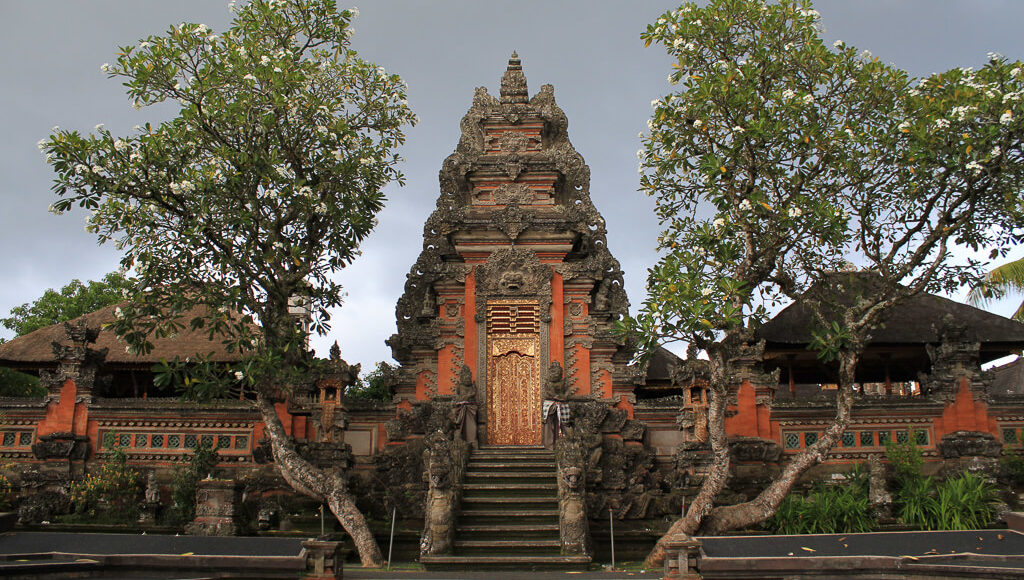
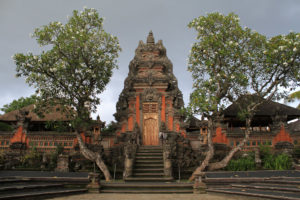
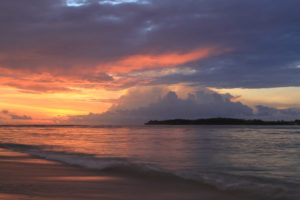
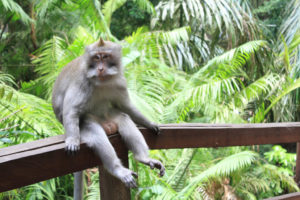
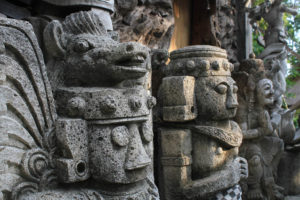
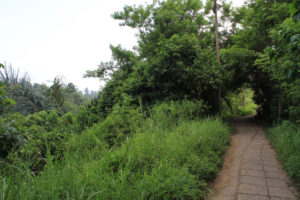
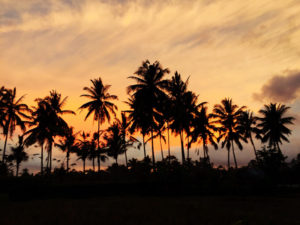
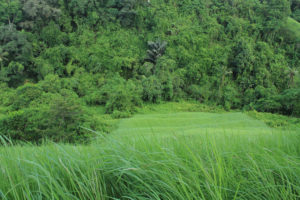
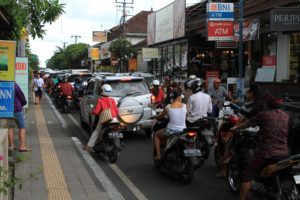





No comments